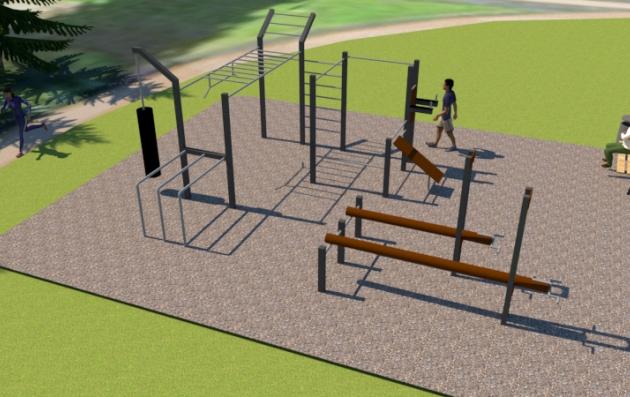Date of label : 29/10/2024
-
Tartu Vald , Estonia
-
Size of city : 13.287 inhabitants

This image depicts an outdoor fitness area or park designed for calisthenics and bodyweight exercises. This setup is typical of outdoor fitness parks designed to provide a variety of exercise options for people of different fitness levels.
Summary
When the municipality of Tartu (EE) procures playgrounds and other small-scale public facilities the community is involved from the start, during the drafting of the technical description. In the procurement process, the city informs bidders of the contract value, and they must offer the best solution for this specified amount. The municipal government is responsible for the bureaucratic aspects of public procurement, but the community also selects the winning bid through voting. This ensures that the procured facility meets the needs of the community.
The solutions offered by the Good Practice
Each year, the municipality of Tartu aims to establish a public facility needed by the community in a different area. These facilities, such as playgrounds or outdoor gym, are actively used by local residents. When suitable land is available, procurement planning begins, with the community invited to submit their preferences regarding the planned facility’s function and appearance. These collected wishes are incorporated into the technical description of the procurement.
Bidders then submit proposals within the specified budget, which are evaluated by members of the community. Through a voting process, the successful bidder is chosen to implement their proposed solution. This approach has been well-received by both the community and the businesses participating in the procurements. Several municipal departments collaborate: planning and construction manage land use and building the facility, development conducts the procurement, and communication disseminates information.
Building on the sustainable and integrated urban approach
The creation of playgrounds, outdoor gyms, and other public infrastructure enhances green spaces and recreational areas, contributing to the overall environmental quality of urban areas. Facilities that promote active engagement encourage residents to spend more time outdoors, fostering a connection with nature and supporting environmental awareness.
The procurement process is carried out using free electronic applications, reducing administrative costs. By involving local businesses in the bidding process, the municipality supports the local economy and stimulates competition, leading to innovative and cost-effective solutions.
Inclusive procurement processes actively involve community members in the planning and decision-making phases, fostering a sense of ownership and responsibility. They increase social cohesion by bringing residents together to discuss, vote on, and support beneficial community projects. Facilities built with community input meet residents' real needs, leading to higher satisfaction and usage rates. By providing space for physical activities, the projects encourage healthier lifestyles.
Based on participatory approach
Tartu Municipality's community-based public procurement process involves a collaboration between multiple stakeholders:
- Local community members who provide input, vote on proposals, and use the facilities.
- Various departments of Tartu Municipality, and experts who manage, coordinate, and implement the projects.
Local businesses and contractors who submit proposals and carry out the construction of the selected projects.
The active involvement of community members indicates strong community engagement and support for the process. Positive feedback from both community members and participating businesses demonstrates the effectiveness of the approach. The high usage of the completed facilities confirms that they meet the real needs of the community, validating the participatory process.
What difference has it made?
So far, nine facilities have been procured and built in different areas of Tartu through inclusive procurement. Tenders for these have attracted 3-8 participants per tender. Voting for the proposed solutions depends on the region, with large and more densely-populated areas usually having lower levels of participation than smaller communities.
Previously, the traditional procurement process often led to playgrounds that did not meet user expectations, or the procurement process failed due to costs being too high. Now, providers must make the most attractive offer for each community within a set budget.
Why this Good Practice should be transferred to other cities
The practice of inclusive public procurement strengthens social cohesion in urban areas. Facilities built in this manner meet the real needs of residents, encouraging active use and healthier lifestyles.
All European countries have public procurement procedures, and while there are differences in the implementation of the EU procurement regulation, Tartu’s community-based public procurement process could be applied anywhere in Europe, with each region modifying it to suit their specific needs or context. If digital channels are unavailable, communities can be engaged via face-to-face meetings.
Key success factors for replicating the process:
- Broad stakeholder involvement.
- Knowledge sharing through URBACT networks encourages officials to adopt new solutions.
- Digital platforms and tools can enhance transparency, efficiency, and participation.
- Aligning the practice with national and local policies, and legal frameworks.
Strong leadership and political commitment at both local and national levels.
This practice has been shared at local and international levels, including through the URBACT network "Active Citizens".
